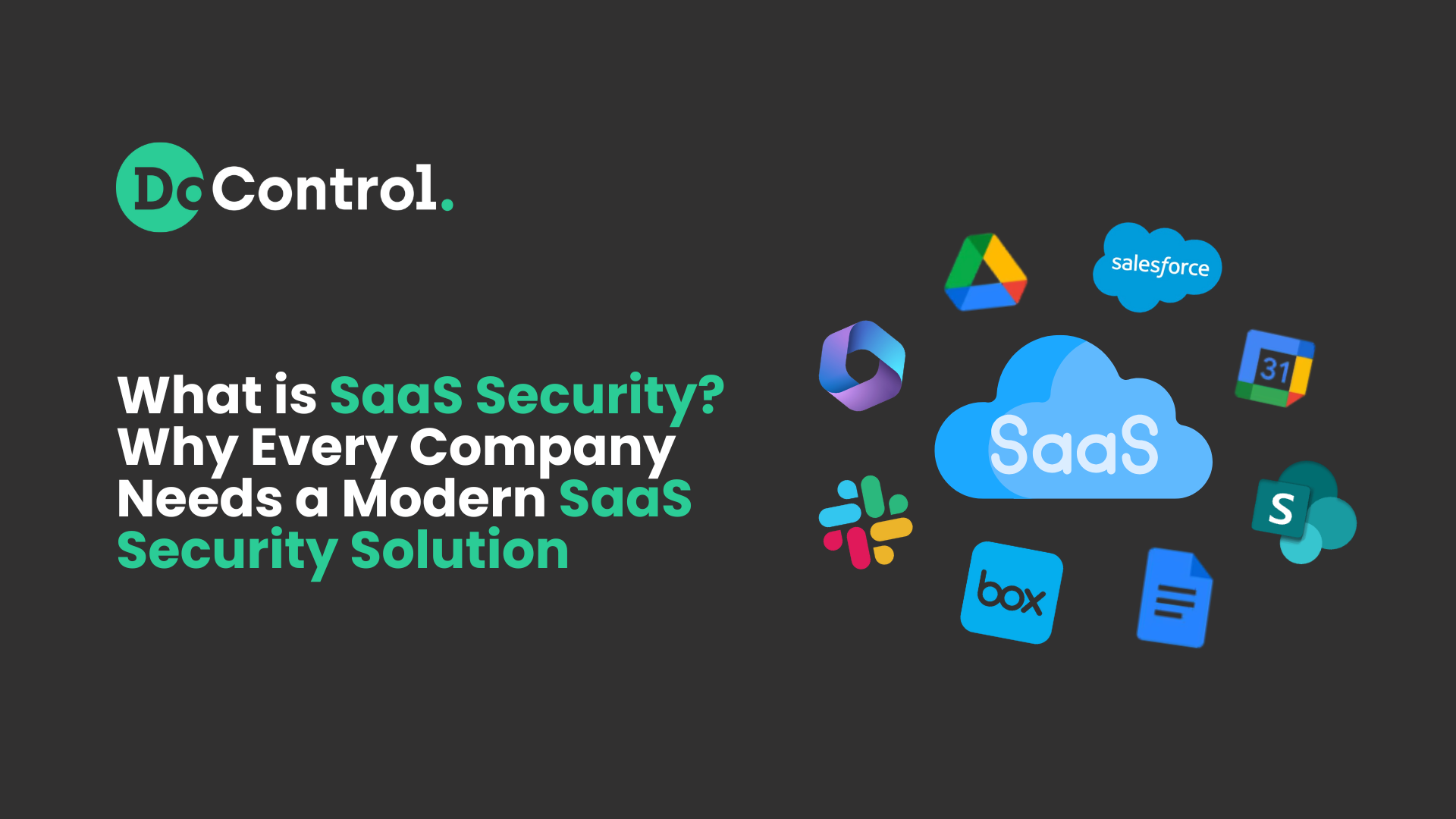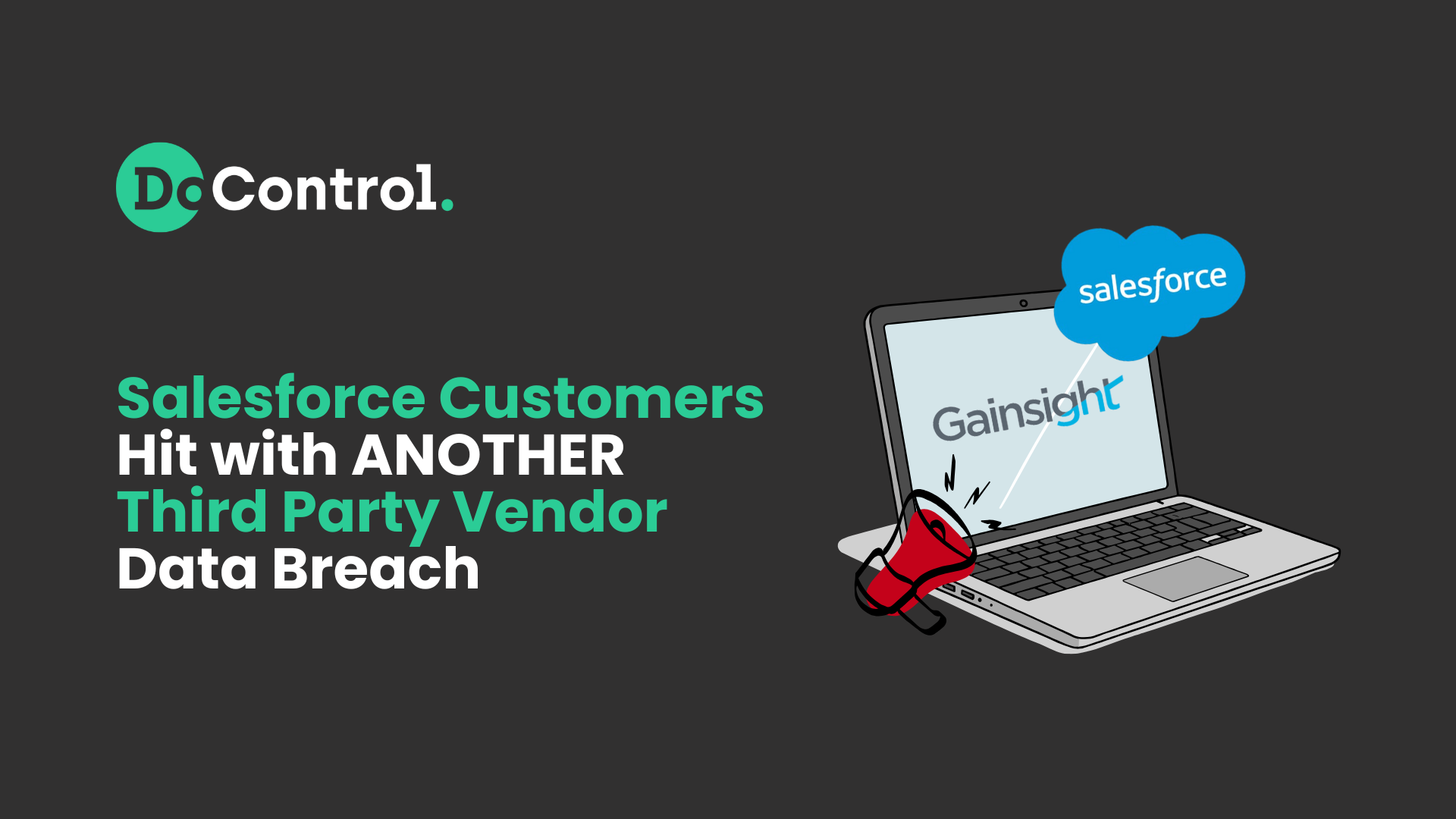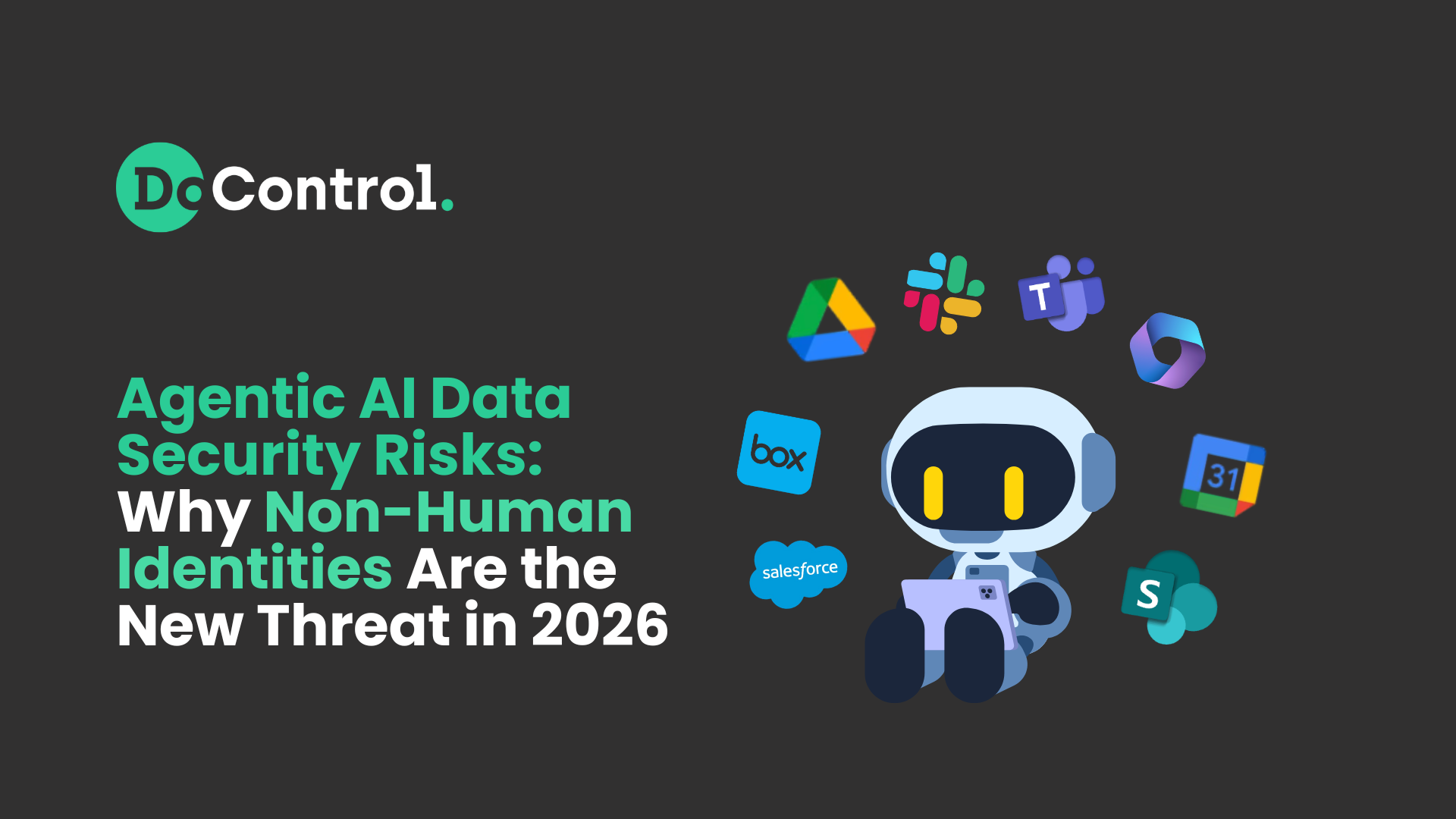
SaaS applications now power nearly every workflow, with the average mid-to-enterprise organization relying on hundreds of connected SaaS applications - each with its own risk profile, data flows, access permissions, and user makeup.
According to Gartner, businesses worldwide will spend nearly $300 billion dollars on SaaS products by the end of 2025.
This explosion of SaaS adoption has transformed productivity - but it has also shifted the enterprise attack surface.
Sensitive data that once lived behind on-prem firewalls is now scattered across SaaS platforms, shared externally in seconds, and accessed by both human identities and non-human identities like AI agents.
Unlike infrastructure (Iaas) or endpoint security (Eaas), SaaS security presents a unique challenge: you don’t own the infrastructure, but you’re still responsible for protecting the data, identities, and configurations that live there.
SaaS applications (by design!) aren’t built with security as their primary focus - and why should they be? These applications are focused on their own productivity, the way their own users use their apps, and making sure their own core functions work.
Salesforce, for example, is dedicated to enabling sales, marketing, and data management for their users. Google Workspace is designed to empower teams with communication and productivity tools that keep their business operations moving.
It sounds so simple, because it is: these companies are software companies that focus on their own software, they are NOT security companies that prioritize security!
The role of these SaaS apps is to innovate within their core domains - not to secure the unique ways your organization uses and shares data inside their platforms. That responsibility ultimately rests with you.
That’s where the gaps form:
- Over-permissioned users and groups
- Misconfigured sharing policies
- Sensitive data exposed to the wrong audiences
- Unmonitored third-party apps with excessive access
- Insider or compromised accounts moving data without oversight
Each of these vectors can become a breach waiting to happen - and most organizations don’t have the visibility or automated controls needed to contain the risk.
In this piece, we’ll break down what SaaS security is, why it matters, the most common risks and attack vectors, the core pillars, and how modern organizations can take the necessary steps they need to secure their SaaS applications in 2026 and beyond.
What is SaaS Security?
SaaS security is the practice of protecting the data, configurations, and identities that operate within Software-as-a-Service (SaaS) applications - platforms like Google Workspace, Microsoft 365, Slack, and Salesforce that now power the modern enterprise.
It encompasses the policies, technologies, and automated controls that safeguard sensitive data from exposure, misuse, or compromise across these cloud-hosted ecosystems.
Unlike traditional on-premise or infrastructure security, SaaS security focuses on how data and information is accessed, shared, and governed inside applications that your organization doesn’t directly control.
In practical terms, SaaS security covers:
- Data protection and loss prevention (DLP) - identifying and preventing sensitive data from leaking out or being misused.
- Data access governance - ensuring users have the right level of access for the right purpose at the right time, and nothing more than that.
- Insider risk management - detecting and mitigating risky or anomalous user or employee behavior.
- Identity threat detection and response (ITDR) - identifying insider risks, suspicious nonhuman identities, or compromised or over-permissioned accounts…these could be employees or a hacker impersonating a trusted ‘identity’ or user account.
- Shadow app discovery and remediation - exposing and managing unsanctioned integrations, unsafe browser extensions, over-permissive apps, or third-party tools.
- SaaS misconfiguration management - maintaining a secure baseline across constantly evolving application settings.
In short, SaaS security is about protecting what lives inside your SaaS ecosystem - your data, your people, and your configurations - no matter where they reside.
The Biggest SaaS Attack Vectors
SaaS has redefined how businesses work - and how attackers operate. As companies adopt hundreds of interconnected apps across Google Workspace, Microsoft 365, Slack, and Salesforce, sensitive data now lives everywhere. The most common SaaS attack vectors include:
1. Account Takeovers & Credential Abuse
Compromised credentials remain one of the most common and damaging entry points for SaaS breaches. Attackers often gain access through phishing, credential stuffing, or token theft. Once authenticated, they operate as legitimate users inside trusted apps.
With access to Gmail, Slack, or Microsoft 365, a single compromised account can exfiltrate massive volumes of sensitive data before anyone notices.
Example:
One recent instance of this was the notorious Workday breach. The breach didn’t originate within Workday’s own systems - it began with a third-party vendor in its support ecosystem. This attack is related to the string of Salesforce incidents that have been happening everywhere.
Attackers impersonated HR and IT personnel to social-engineer employees into sharing credentials and sensitive personal details. With those stolen credentials, the hackers infiltrated the vendor’s customer support platform, gaining visibility into Workday support tickets. The exposed data included names, email addresses, and phone numbers of Workday customers - many of them Fortune-level enterprises.
2. OAuth & Third-Party App Exploitation
OAuth connections - the mechanism that lets users “sign in with Google” or integrate tools like Slack bots and CRM plugins - have become one of the fastest-growing SaaS threat vectors.
Each connected app carries its own set of permissions. Many request far more access than necessary, and if one of these integrations is compromised, it can act as a silent bridge into your SaaS environment.
Example:
In another recent and widely publicized incident connected to Salesforce, a threat actor stole OAuth tokens linked to the Drift application (owned by Salesloft). These compromised tokens allowed the attacker to impersonate Drift as a trusted, authorized app within customer SaaS environments (like Salesforce).
Once inside, the threat actor used those permissions to query and bulk-export large volumes of data from hundreds of Salesforce instances across multiple organizations.
3. Misconfiguration & Overexposure
Even the most secure SaaS platforms can become vulnerable when configurations drift or default settings are left unchecked. Misconfigured sharing policies, excessive admin privileges, and inherited permissions often lead to large-scale data leaks without a single malicious actor involved.
Example:
In the recent Scale AI incident, critical customer data was stored in Google Drive without proper access controls. Many of these files were set to “Anyone with the link can view,” making them accessible to anyone who happened upon a shared link or was forwarded one.
Thousands of documents were discovered publicly accessible, including proprietary AI training materials, internal employee performance ratings, pay information and contractor contact details, confidential manuals belonging to Google and Meta, and more.
4. Insider Risk & Unintentional Data Exfiltration
Not every breach is external. Insiders / employees - whether negligent, compromised, or malicious - pose some of the highest risks to SaaS environments. With the click of a button, an employee can move sensitive data to personal cloud storage, share confidential data to a personal email address, or install an unapproved app.
Example:
A real world example of this was the notorious Coinbase incident. Malicious actors gained access to Coinbase’s internal systems by bribing offshore contractors to hand over their login credentials.
Those insiders effectively gave attackers access - enabling unauthorized access to internal systems and exposing valuable customer data including names, addresses, phone numbers, emails, SSNs, IDs, bank info, and account info.
5. Shadow SaaS & Shadow AI
This is a relatively new threat that is quickly on the rise. Departments and employees increasingly adopt unsanctioned SaaS tools, GenAI SaaS tools, or AI assistants to boost productivity. These are known as Shadow Apps and Shadow AI.
These tools often request broad access to core platforms like Google Workspace, Slack, and Microsoft 365 - creating invisible data pipelines outside the security teams control.
Example:
In a recent campaign, attackers leveraged Anthropic’s Claude AI in a new form of “vibe hacking.” They reportedly targeted at least 17 organizations, using AI not just as a tool for automation, but as an active participant in the attack.
The attackers fed stolen data into Claude to analyze what information held the most value, craft ransom demands, and shape personalized extortion messages designed to manipulate victims psychologically.
The Key Pillars In A Modern SaaS Security Program
SaaS security isn’t about slowing down collaboration - it’s about enabling it safely, dynamically, and at scale.
To defend against the types of incidents we’ve explored - from misconfigurations and insider risk to OAuth abuse and data overexposure - organizations need a framework that’s continuous, contextual, and comprehensive.
A truly modern SaaS security program rests on six interconnected pillars - capabilities that work together to deliver visibility, control, and automation across the entire SaaS ecosystem.
1. SaaS-Native Data Loss Prevention (DLP)
Traditional DLP was built for a different era - one of static rules, black-and-white policies, and block or allow options that brought business ops to a screeching halt.
In today’s SaaS-driven world, data moves fluidly between apps, users, and external collaborators.
Modern, SaaS-native DLP operates with context. It understands not just what data is being shared, but where, how, by whom, and why.
Instead of rigid policies that block productivity, DoControl applies dynamic, granular controls that respond to real context - automatically revoking risky shares, setting link expirations, or applying remediations when data sensitivity demands it.
With real-time monitoring, adaptive enforcement, and customizable workflows, organizations can protect sensitive data without breaking collaboration.
2. Data Access Governance
Over-permissioned users, shared drive links, and forgotten-about external collaborators are among the most common SaaS risks we see today.
Modern data access governance means continuously analyzing who has access to what, how this deviates from standards, and adjusting access and policies dynamically.
Visibility is only the first part of governance, it's the control that companies need. DoControl offers scalable automation and customizable automatic workflows to adjust those permissions and access policies dynamically as teams, projects and roles evolve.
3. Insider Risk Management
Insider threats aren’t always malicious - often, they’re simply accidental. Employees download, forward, or share data without realizing its sensitivity.
Effective insider risk management combines behavioral analytics with context - identifying abnormal activity (like mass downloads or unexpected exports) and enforcing controls automatically before small mistakes become breaches.
4. Identity Threat Detection and Response (ITDR)
SaaS security begins and ends with identity. After all, identity is the new perimeter.
Identity Threat Detection and Response (ITDR) correlates authentication anomalies, login patterns, and data access behaviors to identify when a legitimate account begins acting illegitimately.
As AI agents, service identities, and other non-human entities pop up across SaaS environments due to the AI boom, identity-based threats are multiplying in both speed and sophistication.
As a result, ITDR has become a critical enterprise priority - ensuring that every human and non-human identity is treated the same, continuously validated, monitored 24/7, and secured effectively.
5. Shadow App and Integration Discovery
Every organization runs more SaaS applications than it realizes. Each new integration - whether an approved CRM plugin or an unapproved AI assistant - extends your risk surface.
Continuous discovery of connected shadow apps connected via OAuth and third-party tools reveals hidden dependencies and potential vulnerabilities, enabling security teams to review, approve, or remove risky integrations in real time.
6. SaaS Misconfiguration Management
Misconfigurations are silent risks - no alerts, no noise, just open doors.
A true SaaS security solution should continuously monitor and audit configuration baselines across all major SaaS environments. This way, they can detect when something is out of place and automatically remediate the issue.
Bringing It All Together
Individually, these capabilities provide control points; together, they create a unified SaaS security solution.
That’s the philosophy behind DoControl: one platform that delivers continuous visibility, contextualized risk scoring, and automated remediation across all your critical SaaS ecosystems - always empowering organizations to move fast, share freely, and control seamlessly.
Summary
SaaS has transformed business productivity - but it’s also fragmented traditional security models.
Protecting your organization today means securing multiple facets of SaaS security in a way that works together seamlessly.
DoControl delivers the visibility, automation, and contextual intelligence required to make that possible - empowering security teams to prevent data loss, mitigate insider risk, detect identity threats, and maintain continuous SaaS posture control across Google Workspace, Microsoft 365, Slack, Salesforce, and beyond.
Want to Learn More?
- See a demo - click here
- Get a FREE Google Workspace Risk Assessment - click here
- See our product in action - click here



.png)